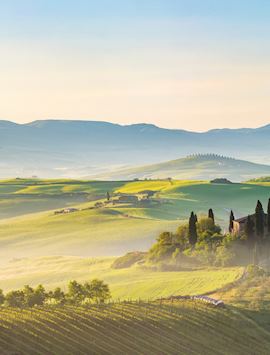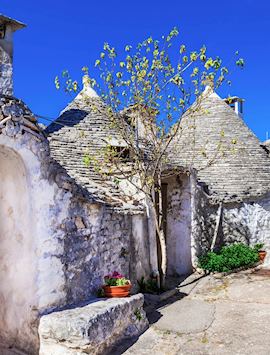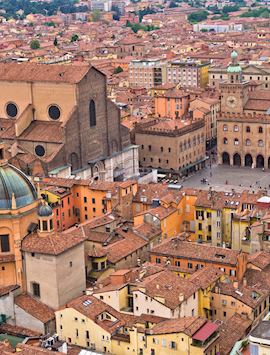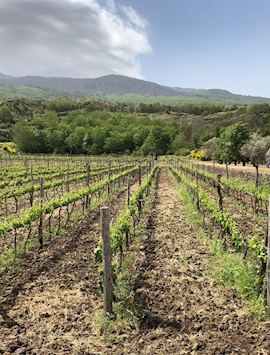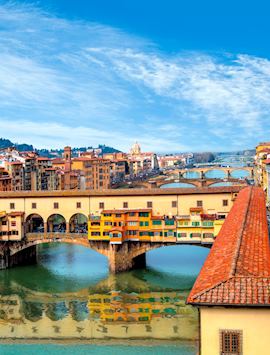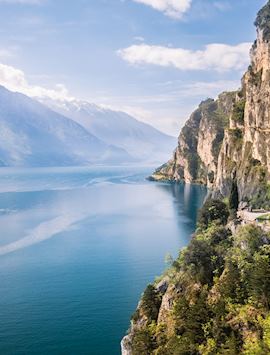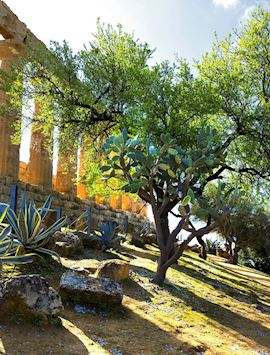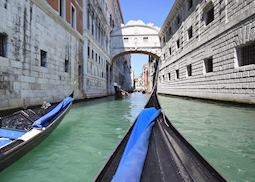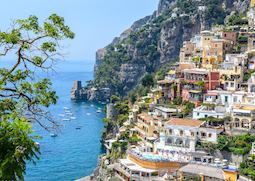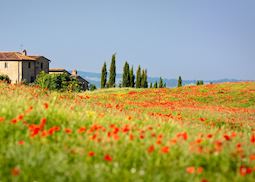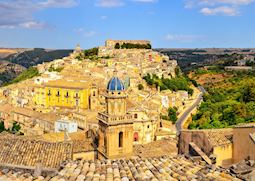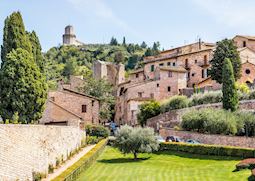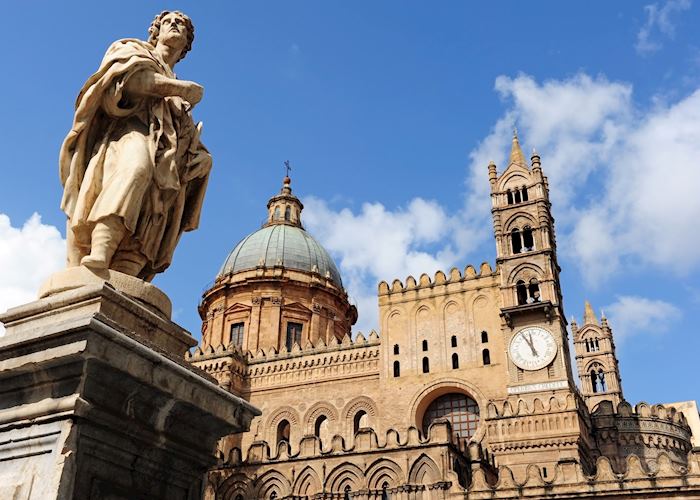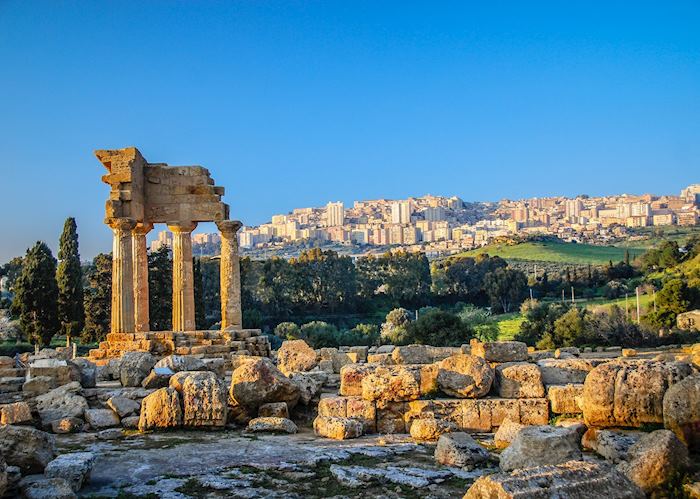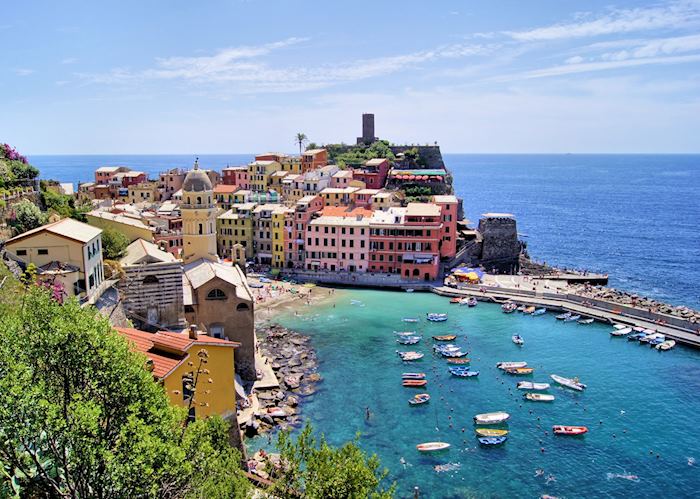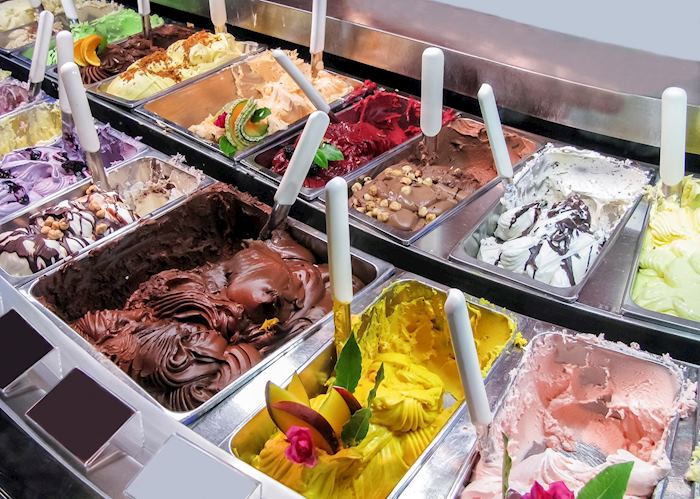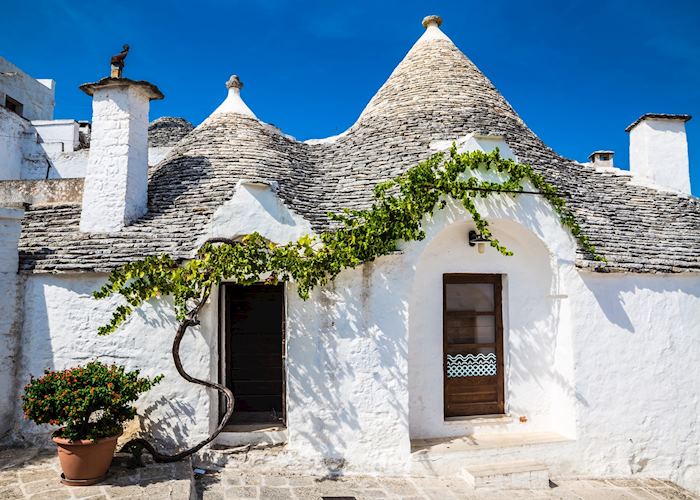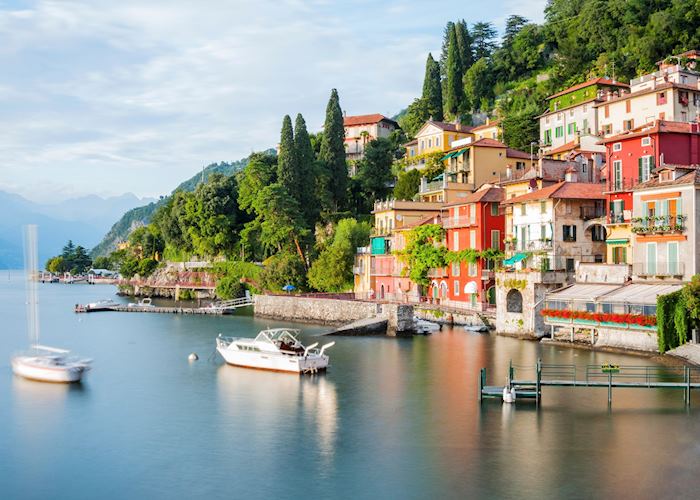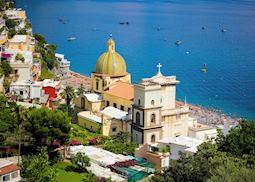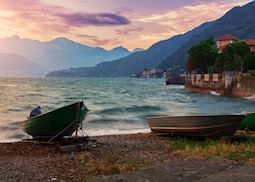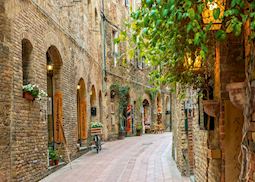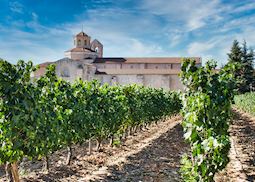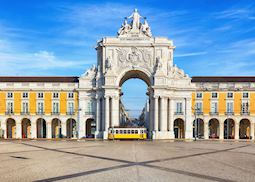
Seat of the Roman Empire, leading light of the Renaissance and fervent advocate of la bella vita, Italy is renowned for its art, architecture, style and passion. Such is the depth of Italy’s cultural treasures, even the most modest church façade can hide work by the likes of Michelangelo. Our Italy specialists draw on their deep-seated connections with the country to help you unravel Italy’s well-known highlights, from Rome's ancient Colosseum to the untouched medieval towns of Tuscany and the lagoon city of Venice.
They also use their first-hand knowledge to show you Italy's lesser-known ways of life. You might find yourself truffle hunting with an expert and his dog in Tuscany, sampling street food in Sicily, exploring the characterful villages of Puglia, or hiking through terraces of vines to reach the tiny villages of Liguria’s Cinque Terre. You could also encounter Italy on board a Mediterranean cruise that whisks you from Barcelona to Italy, calling in at ports from Portofino to Naples. Whether you explore great cities, alpine lakes, or Roman relics, our specialists can help you unlock the hidden secrets, and create the perfect holiday to Italy.
Suggested tours for Italy
Peer inside Mount Vesuvius near Pompeii, marvel at Michelangelo's David in Florence, and explore the wine bars of Venice. Our suggested itineraries are a great starting point as you begin to plan your trip to Italy.
Suggested activities for Italy
Enjoy a private tour of Vatican Museums, Sistine Chapel, and St Peter's Basilica, visit the Colosseum and Forum with a guide, and explore the small Tuscan cities of Siena and San Gimignano. Whatever interests you, our specialists will suggest experiences designed to enhance your trip to Italy.
-
A private boat tour of Lake Como ![Villa Carlotta, Lake Como]()
A private boat tour of Lake Como
Lake ComoA private boat tour of Lake Como
Explore Lake Como on a private boat tour, passing lakeside villages and elegant villas. You will stop off at stunning Villa Carlotta and the picturesque town of Bellagio.
View details -
Cinque Terre photography tour ![Cinque Terre photography tour]()
Cinque Terre photography tour
Cinque TerreCinque Terre photography tour
Perched on the sheer cliffs overlooking the Ligurian Sea, the villages of the Cinque Terre hold a lot of potential for avid photographers. You can explore the area and capture its beauty with the help of a professional photographer on this half-day tour.
View details -
Panoramic boat tour of Venice ![Palace canal and Bridge of Sighs, Venice]()
Panoramic boat tour of Venice
VenicePanoramic boat tour of Venice
Travel along the waterways of Venice by boat, viewing the city from the water on this two-hour tour. You’ll see the different areas of the city and will even have the opportunity to view the lagoons and outlying islands.
View details
Why travel with Audley?
- 100% tailor-made tours
- Fully protected travel
- Established for over 25 years
- 98% of our clients would recommend us
Best time to visit
Our specialists advise on the best months to visit Italy, including information about climate, events and festivals.
Request our brochure
Covering all seven continents, The World Your Way shows you how you can see the world with us. It features trip ideas from our specialists alongside hand-picked stays and experiences, and introduces our approach to creating meaningful travel experiences.

Useful information for planning your holiday in Italy
Modest tipping in Italy is the norm. Rounding up a restaurant bill by a few euros is perfectly sufficient, though if you wish to tip more (cash is preferred) for exceptional service it will always be welcomed. A 10% tip is considered usual in a restaurant but generous for a taxi ride.
For the latest travel advice for Italy, including entry requirements, health information, and the safety and security situation, please refer to the Foreign, Commonwealth & Development Office website.
Italian is the official language of Italy, although English is spoken widely.
Italy’s currency is the euro.
Italy's wine and food are tied to the seasons and local landscape, so we suggest you sample the dishes and vintages that each region is known for. Visiting Emilia-Romagna, for example, you can visit the small family-run producers that create Parmigiano Reggiano, prosciutto di Parma, and aceto balsamico di Modena (balsamic vinegar).
Rome’s food is often overlooked but we suggest fried artichokes (in the spring), pasta carbonara, pizza a taglio, and the city’s egg-shaped version of arancini, known as supplì. For more traditionally round arancini, head to Palermo, Sicily, where they’re a popular street food, alongside other well-known treats like cannoli.
Vineyards cover the country, from world-renowned regions like Chianti and Barolo to small-family run operations with just a few thousand bottles a year. No matter where you visit, we can arrange a tour and tasting at one of the local wineries, as well as more in-depth experiences, like a sommelier-led dinner.
Italy’s key attractions are food, wine, ancient and Renaissance history, and art, but what many visitors love best is the country’s pursuit of la dolce vita. To taste the sweet life yourself, you can venture into the country’s many renowned wine regions, like Barolo, where we can arrange a vineyard visit and wine tasting. Or you can head into the Tuscan hills to hunt for elusive truffles. Meet a nonna in her kitchen for a cooking class featuring her family’s heirloom recipes or sample Sicilian dishes on a guided food tour through Palermo.
Beyond Italy’s robust culinary traditions, you can also experience the country’s rich history and culture. In Rome, you can take a guided tour of the Vatican, see the Colosseum, and explore the city’s backstreets via Vespa, seeing places that only locals go. While in Venice, you might learn to make a Carnavale mask from a master artisan in his workshop.
For your first visit, you might want to visit the three best-known cities — Rome, Venice, and Florence. Known collectively as the Art Cities, these three ancient metropolises are treasure troves packed with museums, galleries, art, architecture, and archaeology, not to mention Michelin-starred restaurants, sunny cafés, and relaxed trattorias.
For some relaxation, oenophiles and gourmets may want to add a few days to lounge amid the sun-gilded hills of Tuscany, indulging in the food and wine that made the region renowned. If you’re looking for glamour, you can instead end your trip by heading north to the Italian Lakes region, which has attracted everyone from Roman emperors to Hollywood royalty. Or, head west to the Amalfi Coast for sun, sea, and sophisticated luxury.
Our specialists will build your trip to suit your personal tastes, but you can get inspired by browsing our example itineraries.
From converted family farms to city palaces, where you stay in Italy depends on where you’re visiting and your personal style. Cities offer a wide range of options, from opulent Renaissance palazzi that are the byword for European luxury to modern boutique hotels with just a few guests.
In the countryside, you might choose to stay on a working family farm that accepts guests — known as an agriturismo. These are often tucked into some of the most beautiful regions and can vary from rustic simplicity to lavish stays with pools, spas, Michelin-starred eateries, and other luxuries. In regions like the Amalfi Coast and the Lakes region, you can opt to stay in classic grand dame hotels, often built in the late 1800s or early 20th century. Our specialists have hand-picked some of the best places to stay in Italy on our accommodation page.
A direct flight from London to Rome takes about 2.5 hours, depending on airline.
The best way of getting around Italy is via train. There’s a good network of high-speed trains between cities, making it easy and quick to move around. Within the cities, you can walk or take taxis.
Driving yourself is also an option — we can provide detailed driving directions. You’ll need your valid UK photocard driver's licence.
The time zone in Italy is GMT +1.
Use our travel tool to find up-to-date visa and passport requirements for Italy. Enter where you’re travelling to and from (including any stopover destinations en route or flight layovers), along with your intended travel dates and passport details, for a full list of requirements.
Your doctor can provide you with vaccine advice for Italy, but you should also ensure you’re up to date with the recommended vaccinations for your home country. You can also check the suggested vaccinations on the Travel Health Pro website.
Italy by region
If you’re planning to focus your time in Italy around a particular area, you can jump into the region you're most interested in to find detailed itinerary ideas together with accommodation choices and a taster of the experiences we can offer.
Italy in pictures
Our expert guides to travelling in Italy
Written by our specialists from the viewpoint of their own travels, these guides will help you decide on the shape of your own trip to Italy. Aiming to inspire and inform, we share our recommendations for how to appreciate Italy at its best.
-
![Italy: the Audley Way]()
Italy: the Audley Way
Explore Venice’s quiet canals with an expert, learn the secrets of pasta making from a real Italian nonna in Rome, or cruise around Capri on a private yacht. We’ll help you carve your own path, whether you want to sample wines in Tuscany’s countryside or hike along the cliffside paths of the Cinque Terre.
-
Visiting the Cinque Terre ![Manorala, Cinque Terre]()
Visiting the Cinque Terre
Visiting the Cinque Terre
The Cinque Terre is a collection of five historic fishing villages that are literally carved into the rocky shoreline of the Italian Riviera. Italy specialist Cara talks about walking along their seaside trails and eating basil gelato on a windy seaside terrace.
Read this guide -
Our expert guide to exploring the Amalfi Coast & Capri ![Positano, Amalfi Coast]()
Our expert guide to exploring the Amalfi Coast & Capri
Our expert guide to exploring the Amalfi Coast & Capri
Italy specialist Caroline picks some of her top things to see and do on and around the Amalfi Coast and Capri. Highlights include driving along the Amalfi Coast, taking a boat tour of Capri, and hiking the Path of the Gods and Path of the Forts.
Read this guide -
A guide to the regions of Italy ![Local fishing boats, Lake Como]()
A guide to the regions of Italy
A guide to the regions of Italy
A tour of a private palazzo, or a cooking class with a Sorrento grandmother? We highlight the major sights and unearth lesser-known attractions for some of our best-loved Italian regions, spotlighting tours that really explore their character.
Read this guide -
Hidden highlights of Tuscany ![Alley in old town San Gimignano, Tuscany]()
Hidden highlights of Tuscany
Hidden highlights of Tuscany
This guide describes some of the lesser-known highlights of the Tuscany region. Our Italy specialist Taylor has included her top things to see and do in Florence, Siena and San Gimignano as well as truffle hunting.
Read this guide
Other popular destinations
Still looking for ideas? If Italy has captured your interest, we think you might also like these destinations.




